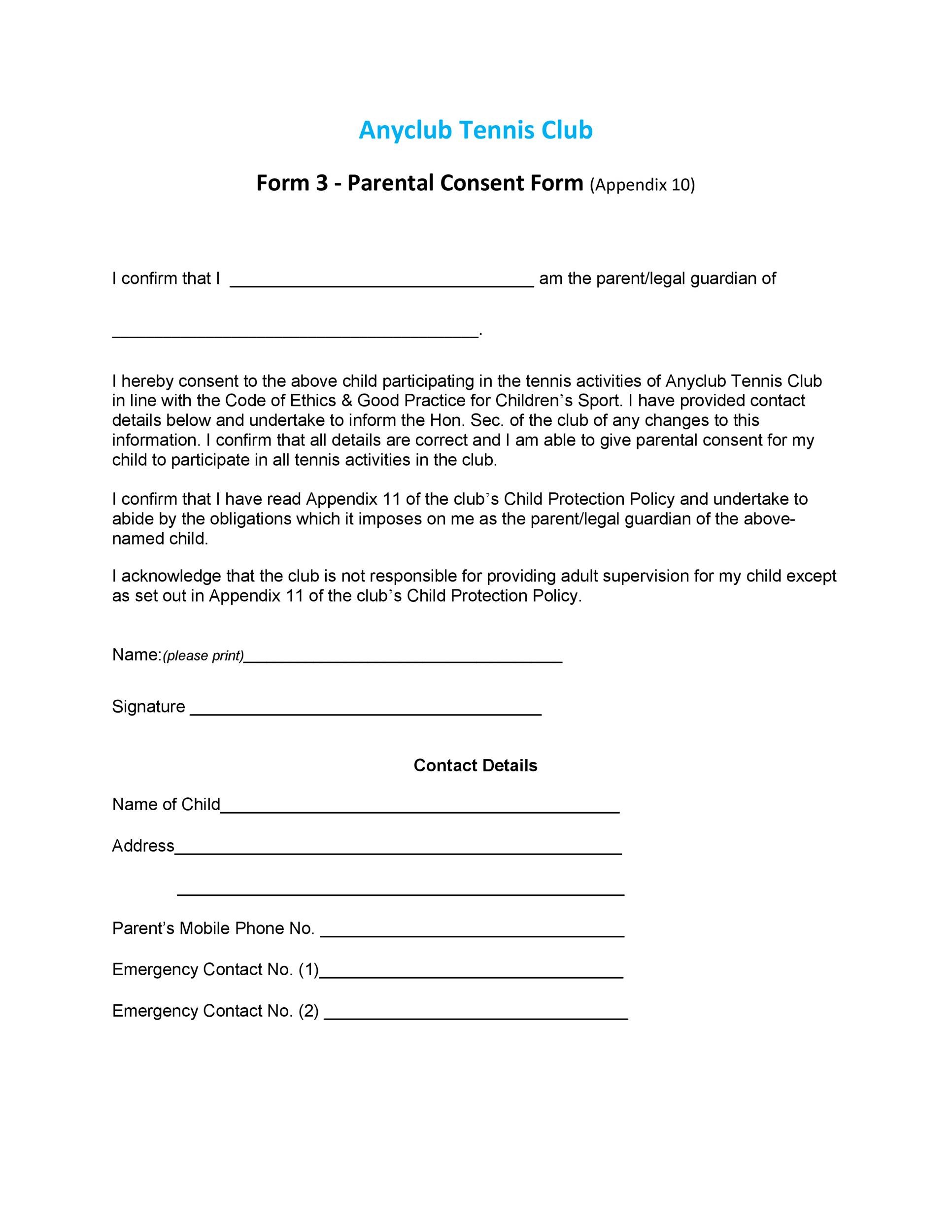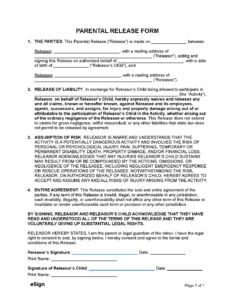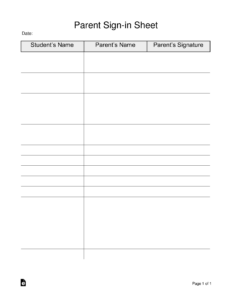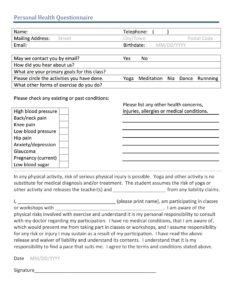Utilizing such documentation provides several advantages. Primarily, it establishes clear communication between the organization and parents regarding the activity and its inherent risks. This transparency fosters trust and ensures everyone is informed. Furthermore, these documents offer legal protection for the organization by demonstrating parental consent and acknowledgment of potential hazards. This can be invaluable in mitigating liability in the event of an accident or injury.
The following sections will explore the key components of these essential documents, providing guidance on creating and implementing them effectively. Topics covered will include recommended content, legal considerations, and best practices for distribution and storage.

Key Components of a Parental Consent and Liability Waiver
Effective parental consent and liability waiver documents require specific components to ensure clarity, comprehensiveness, and legal validity. These components work together to protect both the minor participating in the activity and the organizing entity.
1. Identification of the Minor and Parent/Guardian: Full legal names, addresses, and contact information for both the participating minor and the parent or legal guardian are essential for accurate record-keeping and communication.
2. Detailed Description of the Activity: A clear and concise explanation of the activity, including the date(s), time(s), location(s), and nature of the activity is necessary for informed consent. This should also encompass the purpose of the activity and any inherent risks associated with participation.
3. Disclosure of Risks: A comprehensive list of potential risks associated with the activity should be clearly outlined. This includes both foreseeable and inherent risks, providing parents with a full understanding of potential hazards.
4. Medical Information and Emergency Contact: Information regarding the minor’s medical conditions, allergies, medications, and emergency contact information should be included to ensure appropriate care can be provided in case of an incident.
5. Liability Waiver: This section releases the organization, its staff, and volunteers from liability for injuries or damages arising from participation in the activity, except in cases of gross negligence or intentional misconduct. The language used in this section should be clear and unambiguous.
6. Photo/Video Release (Optional): An optional section granting permission for the organization to use photos or videos of the minor for promotional or other purposes. This section should clearly state the intended use of the media.
7. Signature Lines: Designated spaces for both the parent/guardian and a representative of the organizing entity to sign and date the document are crucial for validation and record-keeping.
Careful inclusion of these elements ensures informed consent, minimizes potential misunderstandings, and provides a robust legal framework for all parties involved. This facilitates a safe and positive experience for the minor while protecting the organization from unwarranted liability.
How to Create a Parental Consent and Liability Waiver
Creating a robust parental consent and liability waiver requires careful consideration of several key elements. A well-drafted document ensures clarity, protects all parties involved, and facilitates a smooth and safe experience for minors participating in organized activities.
1. Define the Scope: Clearly outline the specific activity for which consent is being sought. Include dates, times, locations, and a detailed description of the activity itself. Specificity is crucial for informed decision-making.
2. Identify Risks: Conduct a thorough risk assessment to identify potential hazards associated with the activity. List these risks clearly and comprehensively within the document. Transparency regarding potential dangers is paramount.
3. Consult Legal Counsel: Seek legal advice to ensure the waiver language complies with applicable local, state, and federal laws. Legal review is vital for ensuring the enforceability of the document.
4. Craft Clear Language: Use concise and unambiguous language throughout the document. Avoid jargon and technical terms. Clarity ensures all parties understand the terms and conditions.
5. Include Essential Information: Gather necessary information from parents/guardians, including medical details, emergency contacts, and participant information. This information is crucial for responding to emergencies and ensuring participant safety.
6. Designate Signature Lines: Include designated spaces for both parental/guardian signatures and authorized representatives of the organizing entity. Signatures validate the agreement and signify acceptance of the terms.
7. Establish Distribution and Storage Procedures: Implement secure methods for distributing and storing completed waivers. Maintain accurate records for future reference and potential legal proceedings.
A comprehensive parental consent and liability waiver provides a framework for safe participation in activities while protecting the organizing entity from liability. Meticulous attention to these elements strengthens the document’s effectiveness and fosters a safe environment for all involved.
Careful creation and implementation of parental consent and liability waiver documentation are essential for organizations working with minors. These documents, encompassing detailed activity descriptions, comprehensive risk disclosures, and clear liability waivers, offer crucial legal protection and promote transparent communication between organizations and parents. Adherence to legal requirements and best practices ensures these documents serve their intended purpose effectively.
Prioritizing the safety and well-being of minors requires diligence and proactive measures. Utilizing robust parental consent and liability waiver procedures contributes significantly to a secure environment, allowing minors to engage in enriching activities with appropriate safeguards in place. Organizations are encouraged to review and update their procedures regularly to reflect evolving best practices and legal standards.



